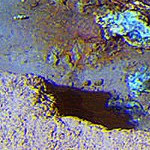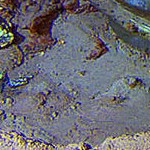            |
Apollo mission rocket engines recovered
A set of giant rocket engines that once propelled astronauts to space have now been recovered from the icy depths of the Atlantic, say a team of researchers led by Amazon.com founder and CEO Jeff Bezos four decades after they splashed into the ocean.
“What an incredible adventure,” Bezos posted on his website from onboard his recovery ship off the Florida coast.
“We found so much,” the billionaire adventurer says. “We’ve seen an underwater wonderland – an incredible sculpture garden of twisted F-1 engines that tells the story of a fiery and violent end, one that serves testament to the Apollo program.”
F-1 engines powered the Saturn V rocket carrying Neil Armstrong and the Apollo 11 mission to the moon, along with other space shots. But the engines were ejected after takeoff and considered destroyed or lost forever.
Bezos said in 2012 that he planned to recover those specific engines. However, he noted in his most recent update, "Many of the original serial numbers are missing or partially missing, which is going to make mission identification difficult. We might see more during restoration."
Each of the engines weighs nearly 9 tons, and they came in a cluster of five. They provided 32 million horsepower by burning 6,000 pounds of fuel every second, and the five together put the largest rocket in history 38 miles up in under three minutes.
After doing their work, the rockets plummeted into the ocean at 5,000 miles per hour, where they have been undiscovered for four decades until Bezos found them using sophisticated sonar and digging for clues through history.
Robert Pearlman, a space memorabilia expert who runs CollectSpace.com calls the discovery “the space enthusiast equivalent of raising the Titanic.”
Pearlman said there were a total of 65 of these engines launched but warned that if the serial numbers can’t be found on the rockets as Bezos indicates, it may be impossible to authenticate which actual mission they were used for.
Bezos said that watching that original mission as a 5-year-old in 1969 inspired him to dream big, and now he wants to undertake the huge challenge of pulling the engines up.
It was even a bit like a space expedition, the e-commerce titan says.
“The buoyancy of the ROVs looks every bit like microgravity. The blackness of the horizon. The gray and colorless ocean floor. Only the occasional deep sea fish broke the illusion.”
The Saturn V engines could be priceless historically, but hard to put a cash value on. Pearlman noted that the highest price paid for a piece of space memorabilia was $2 million, paid by a Russian investor for a Soviet-era Vostok rocket.
"F1 Components have sold for a few hundred to thousands of dollars, but they were all spare parts for that never flew,” says Pearlman.
But profits don't seem to be behind Bezos' quest to find the F-1 engines. The rocket engines remain property of NASA and the U.S. government, and Bezos has indicated that he would like to pull the engines to the surface and then have NASA put them on display at a museum in Seattle.
Pearlman says he’ll be the first in line to see them on display.
“I am just encouraged that Bezos has indicated that he’d like to display these in their current twisted and beautiful shape and not try to bang all the dents and history out of them.”